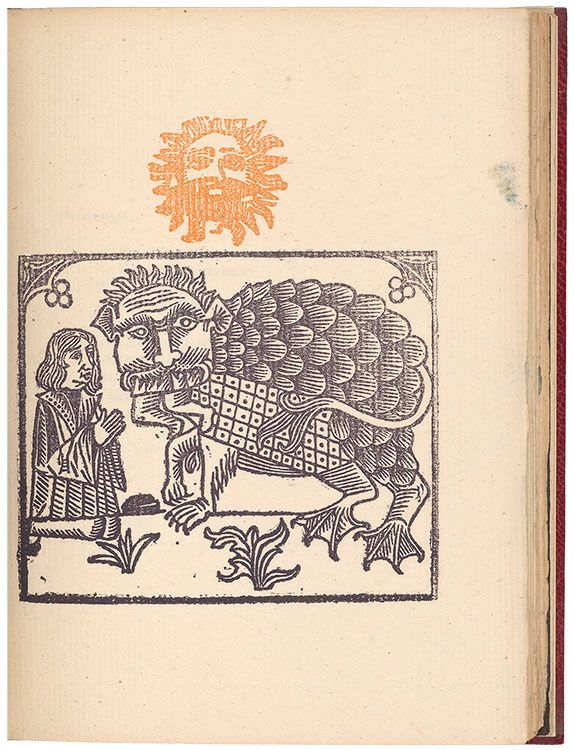
In his early books, Jarry interspersed his own woodcuts (or line drawings he passed off as woodcuts) with found imagery. This illustration for his second book is a composite design of two Renaissance woodcuts. He appropriated most of these kinds of woodcuts from an old catalogue documenting four centuries of popular imagery. Their unacknowledged presence in tandem with Jarry’s modern literature and design seemed to resituate the past in the contemporary or, conversely, suggested that Jarry’s work is itself anachronous. His engagement with both the Middle Ages and the modern shares traits with Baudelaire’s definition of beauty and ideas suggested by Nietzsche’s Meditations on the Untimely; but Jarry fractured this unity in the realm of the book arts. Such disharmony was at odds with figures such as William Morris who were attempting to unify book design in ways that reflected Richard Wagner’s concept of the Gesamtkunstwerk, the total work of art.
Alfred Jarry (1873–1907), César-antechrist (Paris: Mercure de France, 1895). The Morgan Library & Museum, gift of Robert J. and Linda Klieger Stillman, 2017. PML 197018.
